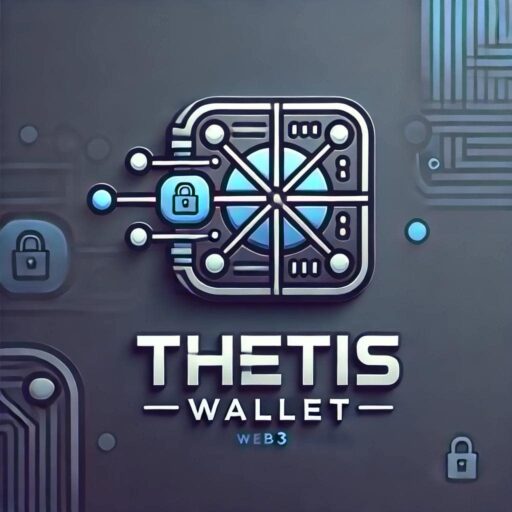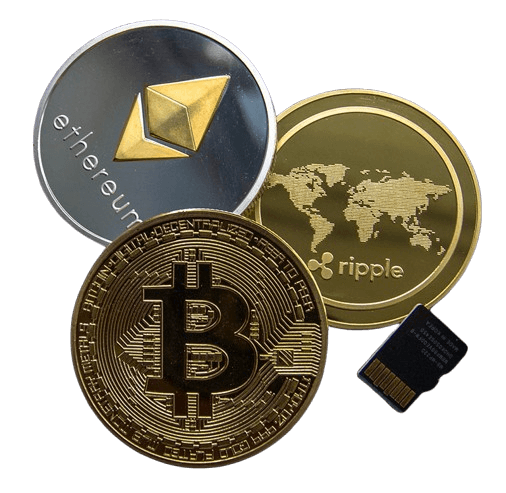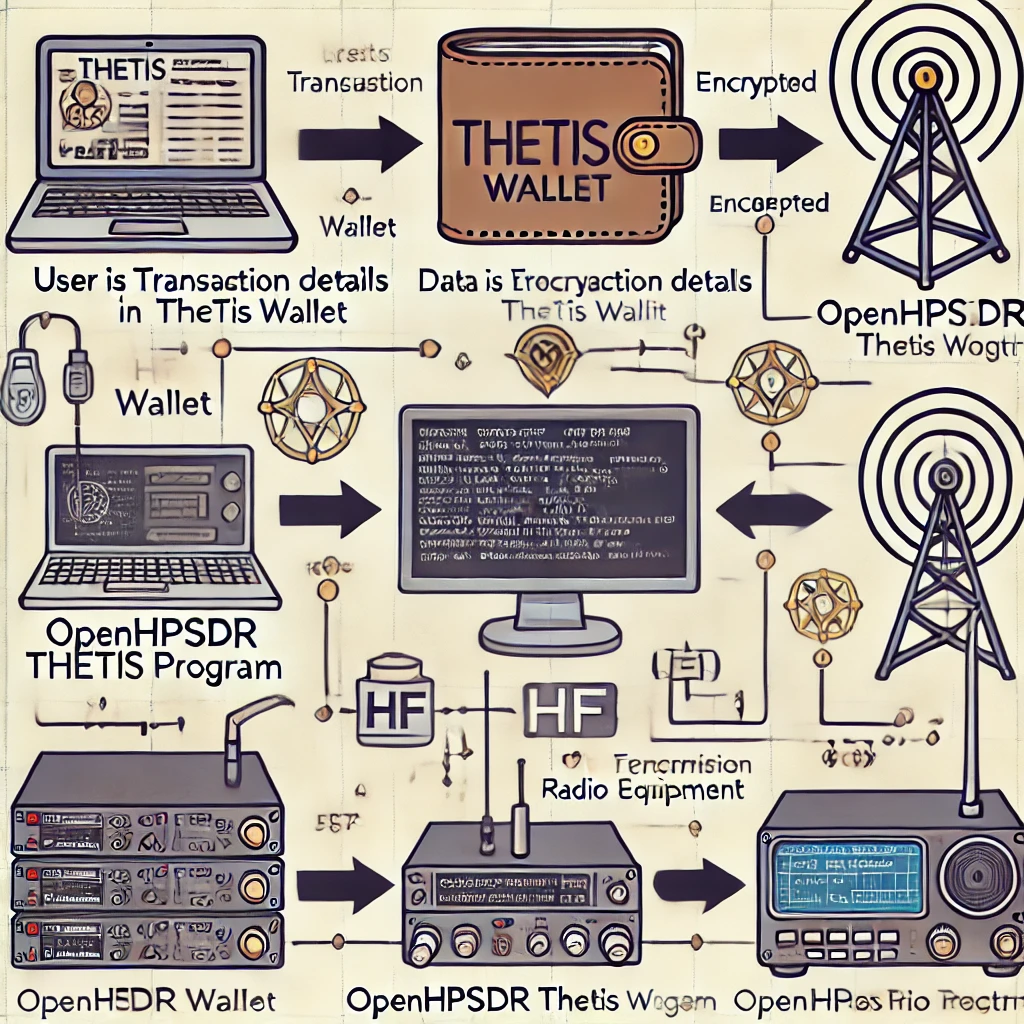
This Thetis SDR sdk enables crypto wallet functionality using Thetis, connected radio and antenna. Thetis Wallet is poised to revolutionize crypto transaction capabilities by merging HF radio technology with Web3 innovations.
The Thetis Wallet sdk is under development and to be released via github when ready .

Consider donating crypto to our development efforts below. Check out the whitepaper in the top right corner,
Those who donate , will be included beta testing and other premium perks offered by the wallet sdk later.
Choose the amount you wish to donate.
A little more of what is behind the scenes to make this work.
Create , encode, send, receive, decode, and ultimately (optionally) broadcast a Bitcoin transaction using the bit library and a simple UDP interface for JS8Call. In a real-world deployment, the sending and receiving functions would run on separate systems (or modules) and the radio side would interface with JS8Call or a similar HF digital mode tool.
How It Works
1. Transaction Creation:
The function create_btc_transaction uses the bit library to construct and sign a transaction with a specified private key, recipient, and amount.
2. Encoding:
The raw transaction string is encoded to Base64 and split into manageable chunks (70 characters each) suitable for text transmission over HF modes such as JS8Call.
3. Sending via HF:
The send_js8call_message function sends each chunk over a UDP socket to the JS8Call API running on localhost (typically on port 2442). In a live setup, these messages would travel over HF.
4. Receiving and Decoding:
On the receiving end, chunks are reassembled and decoded back into the original transaction string using the decode_transaction function.
5. Broadcasting:
Finally, the decoded transaction can be broadcast to the Bitcoin network via the broadcast_transaction function (after proper testing and safety checks).
…
Create and sign a Bitcoin transaction.
Returns a raw transaction string.
“””
key = Key(private_key)
tx = key.create_transaction([(recipient, amount, ‘btc’)])
return tx
# ===========================
# Step 2: Encode Transaction Data for HF Transmission
# ===========================
def encode_transaction(tx_data):
“””
Base64-encodes the raw transaction data and splits it into chunks.
Chunk size is set to 70 characters, which is within typical JS8Call limits.
“””
encoded_tx = base64.b64encode(tx_data.encode()).decode(‘utf-8’)
chunk_size = 70
chunks = [encoded_tx[i:i+chunk_size] for i in range(0, len(encoded_tx), chunk_size)]
return chunks
# ===========================
# Step 3: Send Data via JS8Call UDP API ..and so on.

Another important feature in the lab is ‘Crossband repeating in crypto transmissions’ could be a game-changer, especially for secure, resilient, and long-range blockchain communication. This feature could allow Thetis Wallet to support transactions across multiple transmission bands (e.g., HF, VHF, UHF) for redundancy and reliability.
Potential Benefits of Crossband Repeating in Crypto Transactions
1. Resilient Transactions in Low-Connectivity Environments
• Crypto users in remote or off-grid locations (e.g., rural areas, disaster zones) could still process transactions via alternative transmission bands.
2. Decentralized & Censorship-Resistant Transactions
• By using crossband technology, transactions could hop between different frequencies, reducing reliance on centralized internet infrastructure.
3. Enhanced Security Against Interception
• Combining encryption with frequency shifting could prevent man-in-the-middle attacks, making it harder for adversaries to intercept or jam blockchain-based transactions.
4. Military & Commercial Use Cases
• Ideal for secure government communications, emergency response teams, and even private enterprises needing highly secure asset transfers over blockchain.
5. Integration With Ham Radio & IPFS
• Could allow blockchain transactions to be transmitted over radio frequencies, stored in IPFS, and later relayed to the blockchain once internet access is available..
Another feature that is in the works is
Cold Storage Key Management Flow
1. Key Generation:
• Thetis Wallet generates wallet keys and related files.
• Users are prompted to insert a USB device.
2. USB Write Process:
• Thetis Wallet securely writes the keys and files to the USB.
• A checksum or hash is created for each file during this process.
3. Verification Process:
• Upon plugging in the USB, Thetis Wallet verifies:
• File integrity (via checksum/hash comparison).
• File structure (ensuring no unexpected/malicious files are present).
• Key format correctness.
4. Confirmation:
• If verification succeeds, Thetis Wallet proceeds with transactions.
• If verification fails, the user is alerted to potential tampering.
5. Optional Security Enhancements:
• Encrypt the USB-stored keys with a user-defined passphrase.
• Encourage users to keep a second USB backup in a secure location.
Sign up for updates.
Contacts us @ support [@] Thetiswallet.com